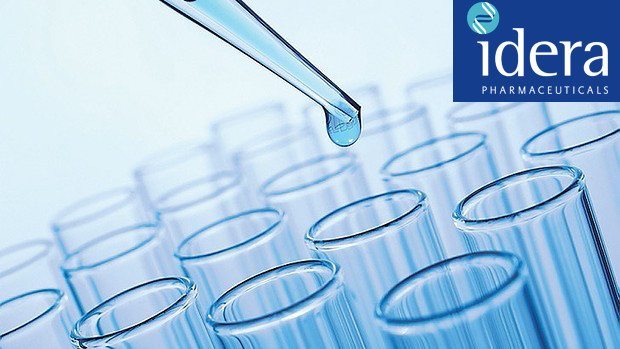On August 6, 2015, Idera Pharmaceuticals, Inc. (NASDAQ:IDRA) reported a third quarter loss of $11.3 million. Despite the loss, the company gained strength, and is currently trading at a circa 10% premium to its pre-announcement market capitalization. At first glance, this seems counterintuitive. However, a closer inspection reveals the market’s reasoning, and presents an intriguing opportunity for an exposure to the oncology and rare disease space. Here’s why.
First, what’s Idera. The company is a clinical stage biotech with a current focus on using toll like receptor antagonists in oncology indications. Its primary pipeline candidate is called IMO-8400. As mentioned, it is a TLR antagonist, which means it inhibits the signaling pathway of TLRs. TLRs are what are responsible for initiating an immune response in a wide variety of situations, so why would you want to inhibit this process? Well, in the indications Idera is targeting, the immune response is to create more cytokines – toxic cytokines – that cause the cells of whatever is causing the damage to replicate. By inhibiting the TLR signaling pathway in pathogenic tissue, the immune response doesn’t happen and the initial cells don’t replicate. That’s the essence of it anyway.
Idera is currently trialing IMO 8400 in a phase 1/2 clinical trial for a Waldenström’s Macroglobulinemia (WM) indication. WM is a rare type of B-cell lymphoma that is – at present – totally incurable. The day before the financials announcement, the company announced it is set to present data from the trial at the 2015 American Society of Hematology annual meeting, which is set to take place from December 5 to December 8 in Orlando. That Idera intends to present the data at the meeting suggests it is positive (otherwise there is no incentive to parade it in front of sector experts), and this suggests we could see some demonstration of efficacy from the trial. The company has said it also intends to bring safety and tolerability into the presentation, meaning we will be able to get an idea of the all round profile of the drug – a good thing at this early stage. It is only a small trial, 19 patients enrolled and dosed, but in a rare disease like this (1000-1500 new cases a year) small trials will often be enough to get a drug to the next stage of the development process, purely based on the fact that there is not a large enough patient population sample to conduct a bigger trial.
Just this week, Idera also announced it had kicked off the enrollment phase of a phase 2 for a second indication – dermatomyositis. Dermatomyositis is an inflammatory skin and muscle disease, in which the immune response elicited by the TLRs translates to an overproduction of inflammatory cytokines, adding to the inflammation. By inhibiting the production of these inflammatory cytokines, just as with its WM indication, the company hopes it can reduce and negate the symptoms of the disease. This one has a larger patient population in the US – somewhere circa 20,000 – and so the sample size for the trial is larger at 48 patients across 20 US centers. We don’t know exactly when top line is expected, but the trial is 24 weeks’ worth of dosing. Taking into account time necessary for recruiting the patients, we are probably looking at top line somewhere during the second half of next year – likely fourth quarter.
So that’s why the company is gaining strength. It got hammered over the last few months in the wake of the wider market decline, but with the data presentation a near term catalyst and the initiation of a fresh indication trial, there is plenty to keep it in the spotlight going forward. If it can maintain a positive track record in the ongoing trials, we could be looking at a phase 3 in its initial indication (WM) before second quarter next year. It’s a rare disease, currently with no available treatment, making it eligible for both orphan and breakthrough designations. If we get these, keep an eye on status updates as potential upside catalysts. Keep in mind that the company may need financing to complete a phase 3, if we get to that stage. Cash on hand comes in around $35 million, down from $92 million at the end of second quarter, and costs are likely to inflate in the wake of the second indication trial. Any financing will likely dilute the holdings of an early stage investor – not something that should necessarily negate an investment (it happens a lot in biotech) but something to consider when weighing up the risks. Roll on December.
